
Be it any part of the globe, champagne is one of the most popular sparkling wines. The reason being, it complements every significant occasion with an air of subtle sophistication and elegance.
Even if you are a wine newbie, there is no way you will not enjoy the taste of champagne. It is a true French classic, with each drop reflecting the exceptional terroir of Northern France's Champagne region, which is intertwined with a cool climate, chalky soils, and relatively high altitude.
In this article, we will assist you in your bubbly journey and answer any questions you may have about the taste of champagne. From how champagne tastes to what determines its flavor to the best way to serve it to preserve its flavor profile, we've got you covered!
What Does Champagne Taste Like?
How would you describe the taste of Champagne when there are so many different varieties? Each bubbly offers a unique drinking experience, whether in terms of color, bubbliness, aromas, texture, taste, or finish.
However, champagnes, in general, taste bright and refreshing, with a lively acidity and a variety of fruit flavors such as green apple, lemon, and peach, as well as floral or nutty notes and a lively, effervescent mouthfeel.
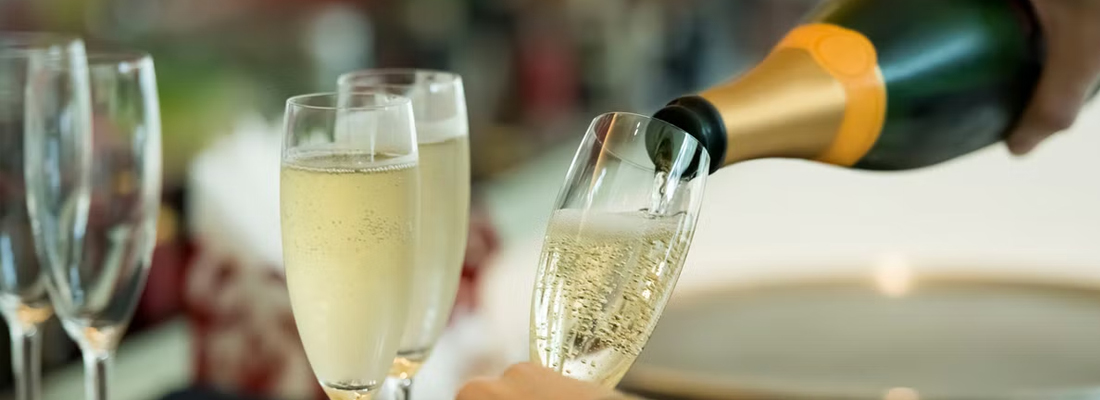
What Determines The Taste Of Champagne?
From the beginning, when the grapes are picked, to the end, when the bubbles are pushed out, there are many factors that affect the taste of champagne. Here is a detailed look at each:
- Grape Variety: The type of grapes used to produce champagne and how much of each type is used in the blend have a big effect on how the champagne tastes. Champagne can be made from seven different kinds of grapes, but Chardonnay, Pinot Noir, and Pinot Meunier are the three main ones.
Here are the main ways that each of these three types of grapes affects the taste:- Chardonnay: This white grape type tends to give the champagne citrus and floral flavors, along with a freshness and finesse that are hard to beat. Notes of apple, pear, and melon stand out the most.
- Pinot Noir: Pinot Noir is a type of red grape that is hard to grow but gives champagne a rich flavor and body. Most of the time, the flavors are sweet and spicy, with cherry, raspberry, and strawberry notes.
- Pinot Meunier: This red grape variety can add freshness and acidity to champagne, and its tastes tend to be fruity and floral, with hints of red berries and citrus.
- Terroir: Terroir incorporates all of the factors that contribute to the production of grapes in a vineyard, including climate, soil, and topography. Because terroir directly affects the quality and flavor of the grapes, terroir has a significant impact on the flavor of champagne.
For instance, lower temperatures result in higher acidity levels in grapes, making champagne even crisper and more refreshing. whereas a vineyard situated at a higher altitude enjoys superior drainage and sun exposure, resulting in riper, more flavorful, and more complex grapes - Winemaking Process: Champagne's flavor is highly influenced by the processes involved in its production, such as pressing and fermentation.
For instance, delicate pressing, also known as a "coquard press," which extracts juice with minimum contact with grape skins, produces champagne with delicate flavors. On the other hand, bottle fermentation, in which yeast consumes the carbohydrates, produces champagne with complex flavors such as toasted bread, brioche, and nuts. - Aging: The length of time a sparkling wine is aged also affects its flavor profile, as complexity and profundity tend to increase with age. For example, the Dom Perignon Brut P2 Vintage has a significantly more complex flavor than the Dom Perignon Brut Vintage because it has been aged for at least 15 years.
- Carbonation: Carbonation in champagne refers to the presence of dissolved CO2 gas, which produces the so-called effervescence upon opening the bottle. Carbonation level can affect the flavor of champagne, with higher levels creating a more intense and vibrant experience and lower levels creating a softer and smoother flavor.
Does Champagne Taste Good?
Yes, champagne tastes good and people enjoy drinking it because it has bubbles, is acidic, and has notes of fruit or flowers. Whether you like the taste of champagne or not depends on your taste preferences and whether you picked the right type of champagne for yourself.
Some champagnes are more complex than others, and some are even more mellow, so to have a fantastic time with bubbly, examine what appeals to your taste buds the most and savor accordingly. The same applies when sending a champagne gift to a loved one or business associate; they will enjoy its flavor if it matches their preferences.
If you have a sweet tooth, you should attempt champagnes with a higher dosage, such as demi-sec and doux, and nothing surpasses the classic brut category for dry preferences. Try the 100% Chardonnay Billecart Salmon Cuvee Louis Salmon Blanc De Blancs Brut champagne if you want wines that are loaded with a sense of freshness, while Veuve Clicquot La Grande Dame is a fantastic recommendation if you like champagnes that are more nuanced.
Is Champagne Bitter Or Sweet?
Champagne's taste can differ, but it is typically a dry, acidic sparkling wine. Some champagnes may be a touch sweeter than others, but they are not typically classified as sweet wines.
Champagne is produced using the méthode champenoise, which entails secondary fermentation in the bottle. During that process, yeast and sugar are added to the base wine to produce carbon dioxide and alcohol. The sweetness of the final champagne is determined by the quantity of sugar introduced at this stage.
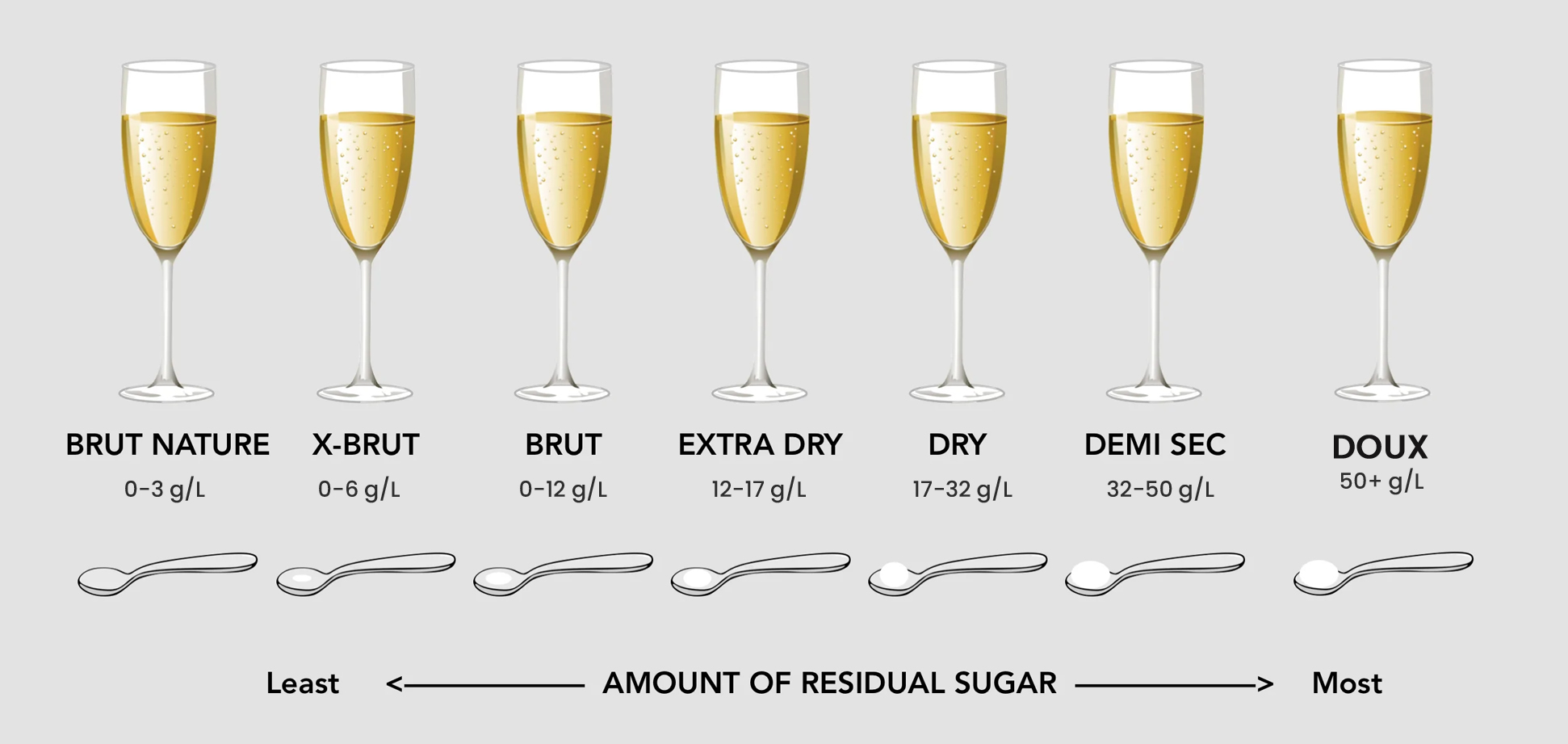
Champagne is typically divided into the following categories based on its sweetness:
- Brut Nature:0–3 g/L sugar (Driest option, No dosage applied)
- Extra Brut:0–6 g/L sugar
- Brut:0–12 g/L sugar (Most popular category, Balanced sweetness)
- Extra Sec:12–17 g/L sugar
- Sec:17-32g/sugar
- Demi-Sec:32–50 g/L sugar
- Doux:50+ g/L sugar (Sweetest option, Ideal after dinner)
Does Champagne Taste Like Wine?
As mentioned before, Champagne is a sparkling wine from Northern France, and its flavor is distinct and unlike that of red wines, white wines, and other sparkling wines. Champagne is different from wine, which is why it tastes so different. It has a unique freshness, lively acidity, fruit and floral notes, and a lively, effervescent flavor.
How Does Champagne Taste Different From Red Wines?
Champagne has a lighter body and greater acidity than red wines. This dramatic difference in flavor profiles is a result of different grape varieties, production methods, and aging.
Red wines are produced solely from red grapes, including pinot noir, Cabernet Sauvignon, Merlot, and shiraz, among others. It is typically aged for a shorter period of time and does not utilize the "methode champenoise" used to create champagne.
How Does Champagne Taste Different From White Wines?
The only characteristics shared by champagne and white wines are vibrant acidity and freshness. However, owing to distinct production techniques, grape varieties, and aging, their flavors vary.
Unlike champagnes, white wines lack a bubbly texture, are less complex, and contain a greater variety of white varietals, including Sauvignon Blanc, Riesling, Pinot Gris, and Chenin Blanc, as opposed to chardonnay alone.
How Does Champagne Taste Different From Other Sparkling Wines?
Champagne tastes different from other sparkling wines due to its distinctive fruits, time-honored method of fermentation in the bottle, and strict aging regulations. Because of this, Champagne is able to stand out from other types of sparkling wine, such as Cava and Prosecco, with its own unique flavor character.
Additionally, the bubbles in Champagne tend to be smaller and more persistent, which makes it even creamier and smoother in the mouth than other sparkling wines.
Does Serving Influence Champagne Taste?
Yes, serving can have a direct effect on the flavor of champagne, which is why champagne serving and drinking etiquette is so peculiar.
In terms of temperature, glassware used, and food pairing, how you serve champagne can influence its flavor experience in a positive or negative way. Let's look into each of these separately!
- Champagne should be served at the ideal temperature to preserve its flavor and aroma. The right temperature for serving champagne is between 45 and 50°F (7 and 10°C). Remember that if you serve champagne too cold, its flavors and fragrances will be masked, while serving it too warm will emphasize the alcohol.
- Proper glassware is also required to embrace the taste of champagne, and it is entirely up to the individual's tastes as to how they choose to savor champagne. A tall, narrow flute glass can bring out the aroma and keep the bubbles together, while a broader, tulip-shaped glass can let you smell and taste more of the wine.
- A well-thought-out food match is also important for a memorable champagne-sipping experience. For example, Moet & Chandon Nectar Imperial Rose Demi-Sec goes well with our Godiva chocolate Holiday gift basket because of its sweetness, which goes well with the chocolates, and its bubbles and acidity, which break through the richness of the chocolate, making for an indulgent match.
Let’s Uncork Flavors Of Our Best-Selling Champagnes Together!
What Does Dom Perignon Taste Like?
Dom Perignon is a rich, harmonious Champagne with flavors of citrus, white peach, and toasted bread.
What Does Veuve Clicquot Taste Like?
A well-rounded champagne, Veuve Clicquot boasts fruity and flowery smells, a crisp and refreshing flavor, and a touch of brioche and toasted nuts
What Does Moet & Chandon Taste Like?
Moet & Chandon is a fruity, light champagne with hints of green apple, lemon, and white flowers with a clean, refreshing finish.
What Does Krug Taste Like?
Complex flavors like toasted bread, almonds, honey, and citrus fruits all come together in Krug champagne.
Here comes the warp! I hope this essay helped you overcome your bubbly nervousness and that you are now ready to savor champagne in style with no disappointment to fizz up. Browse our website further to order your favorite bottle and bubbly, and don't forget there is also the best champagne to give as a gift to your family and friends.
Cheers!




















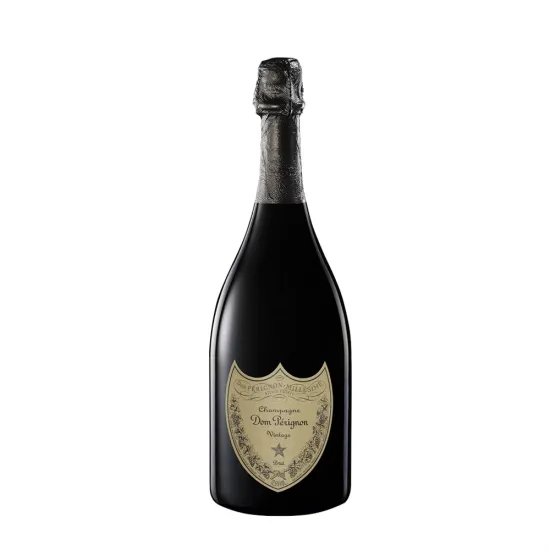
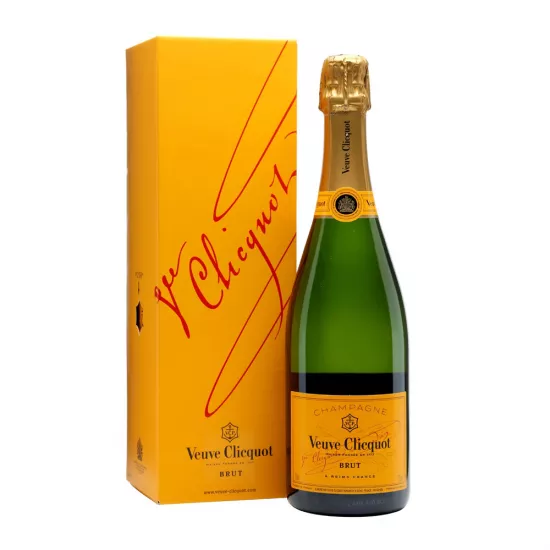
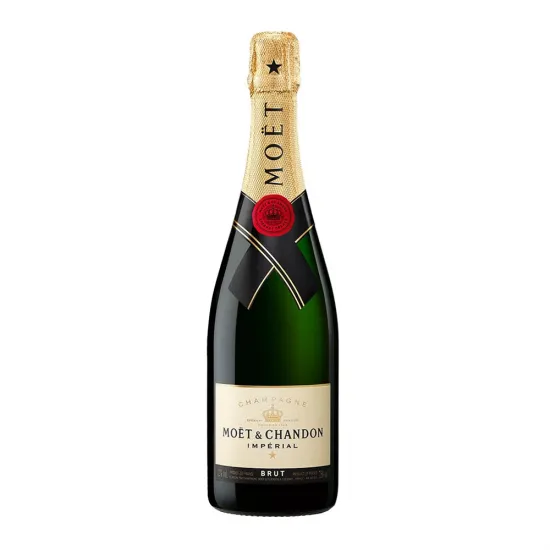
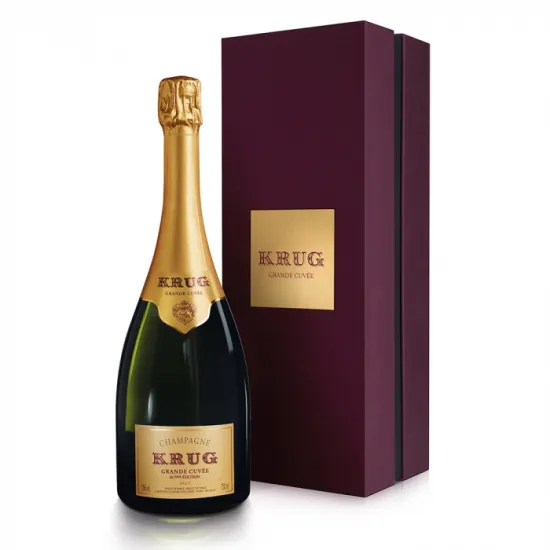
Leave a Comment